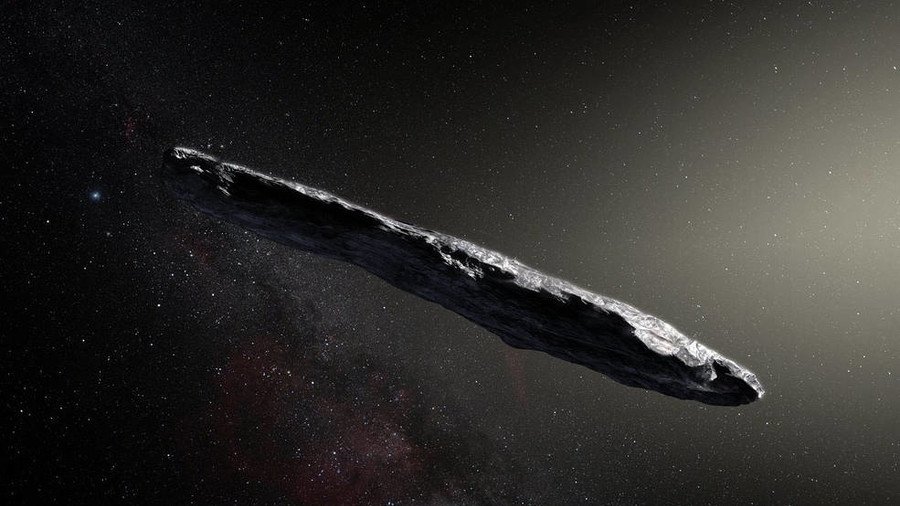Cigar-shaped asteroid is first interstellar visitor to our solar system

A rocky cigar-shaped asteroid has been confirmed as the first ever interstellar object to enter our solar system – and the space visitor could even provide an insight into the formation of other planetary systems beyond our own.
Spotted last month by astronomers using the Pan-STARRS1 telescope in Hawaii, the rock has been dubbed ‘Oumuamua’ by the International Astronomical Union. The name means “a messenger from afar arriving first” in the language of the Central Pacific island.
Spotted: The first intersteller space rock to visit our solar system https://t.co/HcRoCZEYdypic.twitter.com/BxXuYxpzDs
— RT (@RT_com) October 28, 2017
The detection and analysis of the interstellar interloper marks a breakthrough discovery for humanity. It was originally believed that the object was a comet but observations from the European Southern Observatory (ESO) near Munich revealed no signs of cometary activity after Oumuamua passed the Sun on September 9.
Orbital calculations revealed beyond any doubt that this body did not originate from inside the Solar System, the ESO said. “For decades we’ve theorized that such interstellar objects are out there, and now – for the first time – we have direct evidence they exist,”said Thomas Zurbuchen, associate administrator for NASA’s Science Mission Directorate in Washington.
ESO's #FORS instrument on VLT helps astronomers better observe interstellar visitor. (illustration) https://t.co/qZjxG1ZLOmpic.twitter.com/OYdqE8RZcd
— ESO (@ESO) November 20, 2017
Oumuamua has a reddish hue and is highly-elongated, measuring up to 400 meters (1,300ft) long and around 40 meters (130ft) wide. The asteroid is also unique in how it varies dramatically in brightness, fluctuating in luminosity by a factor of ten as it spins on its axis every seven hours.
No known asteroid or comet from our solar system varies so widely in brightness, or has such a large ratio between length and width, according to lead researcher Karen Meech of the Institute for Astronomy in Hawaii. The most elongated objects so far recorded are no more than three times longer than they are wide.
“This unusually big variation in brightness means that the object is highly elongated: about ten times as long as it is wide, with a complex, convoluted shape,” said Meech.
These properties suggest that Oumuamua is dense, comprised of rock and possibly metals. It also contains no water or ice. Scientists believe its red surface is due to the irradiation by cosmic rays over hundreds of millions of years.
The study published in Nature explains that the asteroid has most likely been floating through the Milky Way, unattached to any star system, for hundreds of millions of years before its chance encounter with our star system. Preliminary orbital calculations suggest that the object came from the direction of the bright star Vega, in the northern constellation of Lyra.
"We are continuing to observe this unique object, and we hope to more accurately pin down where it came from and where it is going next on its tour of the galaxy,” Olivier Hainaut from ESO said.
Astronomers estimate that an interstellar asteroid similar to Oumuamua passes through the inner Solar System about once per year, but until recently telescopes have not been powerful enough to detect their presence.












